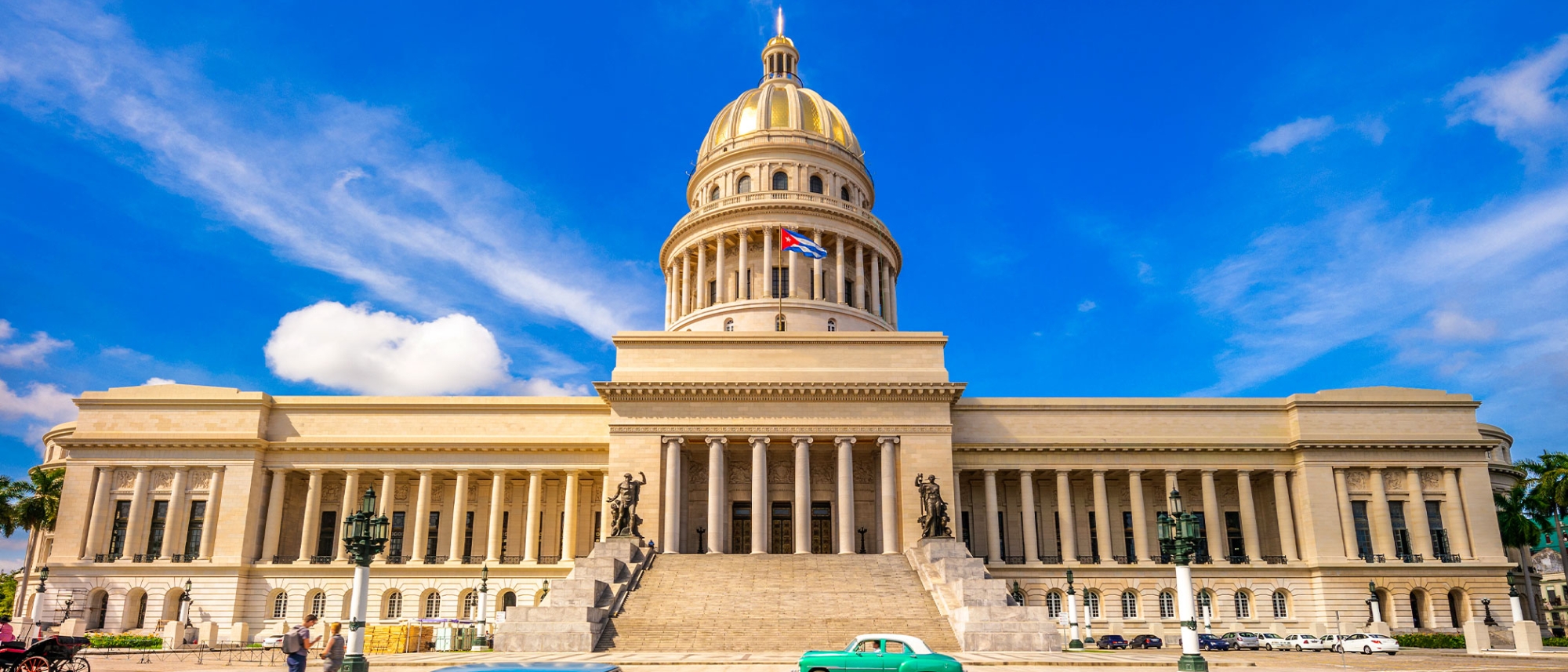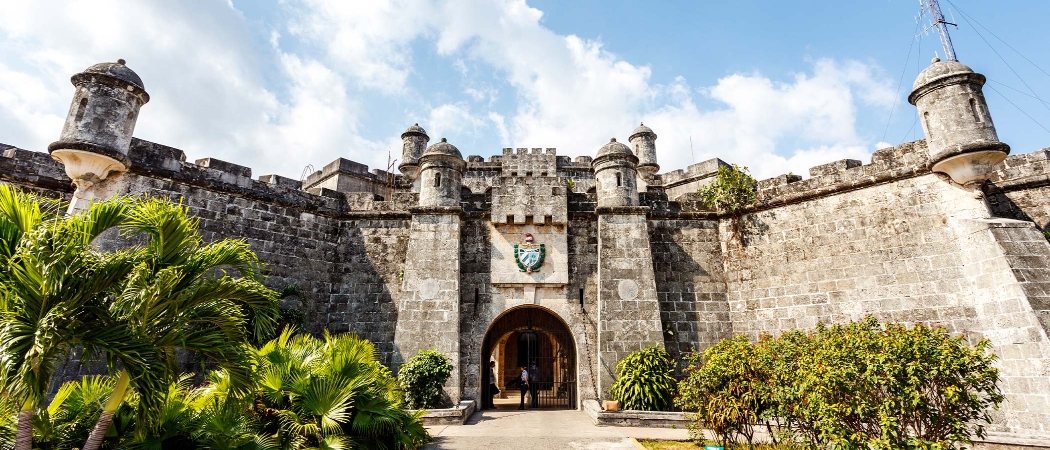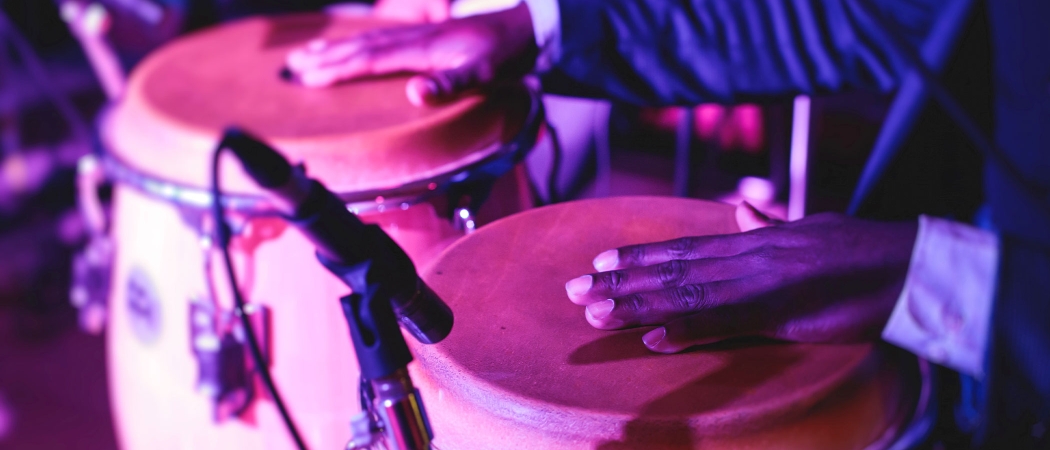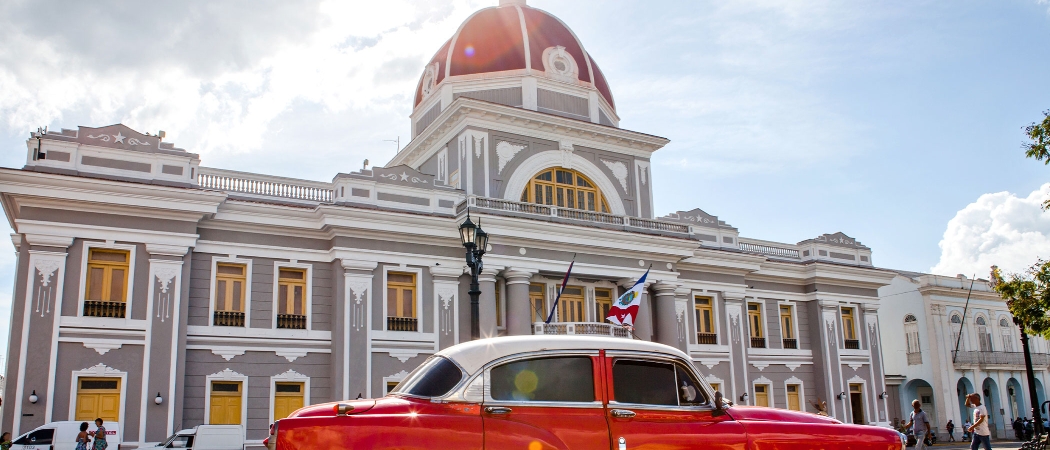
Historic Havana sights
Celebrate centuries of history with these top attractions!
Ready for a history lesson? Founded in 1514 by Spanish conquistador Diego Velázquez de Cuéllar and moved to its current location in 1519, Havana makes 500 years of history look good. We’ve split up the city’s storied past by period and compiled the must-see historic landmarks for you to explore when in Cuba’s exciting capital. Get your notebooks ready!
Spanish centuries
Aside from a brief British invasion in the late 18th century, the Spanish ruled Havana from its foundation until the end of the Cuban War of Independence in 1898.
Fortresses and castles
Start with Castillo de la Real Fuerza, Cuba’s oldest building and one of the oldest forts in the Americas, built in the 16th century to protect the new Spanish city from pirates. The castle is one of three depicted on Havana’s coat of arms! The other two are the Castillo San Salvador de la Punta and the Castillo de los Tres Reyes del Morro, set up around the same time to defend Havana Bay. Near Morro, you can also visit the 18th-century La Cabaña, which guarded the city against a British invasion, but was also used by Che Guevara as HQ during the revolution.
Squares and sanctuaries
Stroll through squares imbued with Cuban history! Spacious Plaza de San Francisco de Asís was the 16th-century scene for the city’s first market until the monks of the square-facing Basilica Menor y Convento de San Francisco de Asís complained about the noise. Cuban baroque architecture dominates around the 18th-century Plaza de la Catedral where the beautiful Catedral de la Habana once briefly housed Christopher Columbus’s remains. Don’t leave without stomping about Havana’s oldest square, Plaza de Armas, just like the colonial military parades that took place here during the 16th century.
Lessons and leaders
Havana witnessed the establishment of one of the first universities in the Americas. Founded in 1728 as a religious institution called Real y Pontificia Universidad de San Gerónimo de la Habana, it eventually became the secular and sublime Universidad Nacional that still exists today. Another important edifice is the baroque masterpiece built in 1792 for Spain’s colonial governors, the Palacio de los Capitanes Generales, which is now the Museo de la Ciudad, the city’s history museum.

Decadent decades
From the beginning of the 20th century to the revolution, a newly independent Cuba quickly morphed into a Caribbean playground for wealthy Americans.
Legendary hotels and nightclubs
Re-live the glitz of Cuba’s past at the Hotel Plaza! Opened in 1906, it welcomed guests like Albert Einstein and Babe Ruth and was home to a casino co-owned by the American mob. For mafia mania, the Hotel Nacional de Cuba cannot be out-done. Opened in 1930, it set the scene for the Havana Conference, a summit of top mafiosos, and also attracted the likes of Frank Sinatra and Winston Churchill. Follow the ghost of their after-parties, right to the calypso glam of the Tropicana Club, showcasing Caribbean spectacles since the ‘30s. For a more low-key nightcap, mimic Ernest Hemingway at his fave Havana watering holes: El Floridita, serving up ice-cold daiquiris for over 100 years, or La Bodeguita del Medio, the birthplace of the mojito.
Beautiful buildings
This era was all about architectural grandeur. Elegant examples include the Lonja del Comercio, the location of the city’s stock exchange during the ‘50s, the inspiring Museo Nacional de Bellas Artes and the sprawling, American-inspired El Capitolio, constructed for Congress in the ‘20s. The ‘30s-era Bacardi Building brings outstanding art deco allure, the Gran Teatro de La Habana Alicia Alonso, completed in 1914, exudes baroque extravagance, while the FOCSA building is all concrete ‘50s modernism, lauded as a feat of Cuban civil engineering.
Mausoleums and the malecón
A cemetery might not be the place you imagine visiting for 19th- and 20th-century opulence, but Havana’s Colón Cemetery does make a convincing case for it with its beautiful renaissance, neo-classical and art deco mausoleums. A sweeping, six-lane highway hugging the seaside, the Malecón is another product of this era. Established in 1901 but continually expanded until the ‘50s, it remains an important symbol of the city and a day-to-night meeting place for its locals.

¡Viva la revolución!
In 1959, Fidel Castro and his Revolutionary Forces ousted President Fulgencio Batista, rid Cuba and its capital of American influence and the rest, as they say, is history.
Revolution 101
Stand where Fidel Castro addressed millions, at the Plaza de la Revolución, dominated by the José Martí Memorial. While the square and the memorial are technically pre-revolutionary—both were built years before the communist conquest—Castro quickly made it the location for his socialist speeches. Surrounded by grey, government buildings, spot the metallic Che Guevara mural adorning the Ministry of Interior. For the low-down on revolutionary history, head over to the opulent Palacio de la Revolución, built in 1943 to house Cuban presidents, but re-purposed by Castro to make room for the Museo de la Revolución.
Political thrills
The relationship between the US and Cuba has not always been the…friendliest. Across the brutalist Embassy of the United States stands Plaza Tribuna José Martí Anti-Imperialista, a popular public venue for political protests and concerts. This is also where you’ll find 20 flagpoles, nicknamed the Wall of Flags, because they block an electronic message ticker displayed on the American embassy. Political history buffs will also want to check out the Embassy of Russia, an odd constructivist structure from the ‘80s, poking out of the Havana skyline like a strange reminder of Soviet influence.
Socialist sights
Of course, the last century has also seen the birth of an inimitable Cuban arts scene. Experience it around Fusterlandia, Cuban artist José Fuster’s explosive outdoor art installation that began in 1975 and earned him comparisons with Gaudí and Picasso. Hob-nob with socialist intellectuals over at Hurón Azul, a resto/bar serving as headquarters for the National Union of Writers and Artists of Cuba since 1961, or catch history in the making at the Fábrica de Arte Cubano, an art gallery/venue only open since…2014.

What’s next
Ready for your pop quiz?
Study history in Havana!
